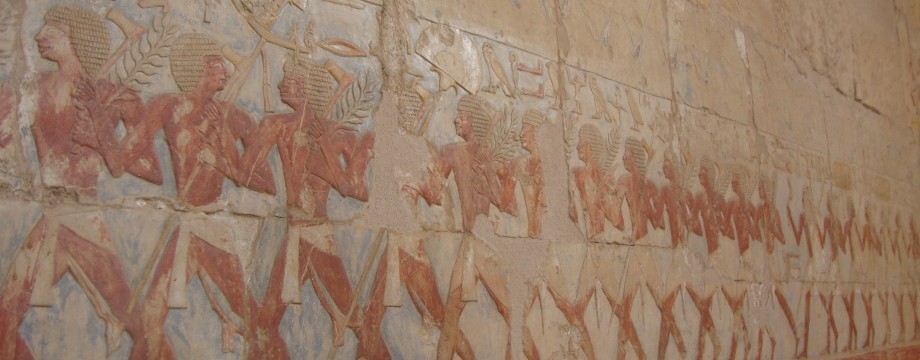Last Friday, I spent the day in Cambridge at AELT 4 a.ka. the more luxuriously titled Ancient Egyptian Language and Text Workshop (http://aeltuk.wordpress.com/category/aelt-4/). The Workshop was set up as a forum for collecting and discussing all the interesting work in progress going on in the world of Egyptology, specifically that of language and text research. From what I saw of Cambridge, it was a green and pleasant town/city/University, though I did not get time to properly look around. Nor did I get time to fulfil my ambition- if that is the word I am looking for- to have a pint in The Eagle (the pub where Crick went to announce his and Watson’s discovery of the Double Helix. Anyway, that aside, what were the topics up for discussion this time? Here is a quick summary of each talk:

The first session consisted of Luigi Prada (Oxford) discussing his work on Roman Demotic Literary Papyri, following on from his work collecting the many manuscripts he is now engaged in the task of translating them, in his paper he focussed on the addition of diacritic marks in certain verbal constructions particularly the third future.
He was followed by the first Liverpool graduate of the day Jenny Cromwell (Macquarie, Syndey) discussing her work on Coptic texts from the early Islamic period, and the Bigraphism therein. Bigraphism is the use of two languages, Coptic and Greek in this case, in the same document interchangeably. Bigraphism is (more accurately) the use of two scripts, within the same document, this is done with clear intention and in this case with Greek and Coptic.
Followed by a coffee break, the next session was to be started by Rune Nyord (Cambridge). His paper was an interesting take on the concept of Ka within Ancient Egyptian thought. His analysis was informed by philosophy and linguistics as well as a study of Egyptian Religion- leading to a Hypothesis that a number of concepts may exist until one is selected for the situation and actualised. A neat thought experiment I think you’ll agree.
Alys Cox (UCL) who is also speaking at ICYE, Sofia in a few weeks. She spoke eloquently on the concept of narratology in Middle and Late Egyptian tales, choosing to focus on the differing styles of narration within these texts.
The final speaker of the morning was the Edwards Professor of Egyptology John Tait (UCL) who spoke about the written structure of Demotic literature and the implications for Oral performance of these texts.
After a lunch brilliantly organised by Amy and Sian we were ready for the afternoon sessions.
The afternoon was opened by Kathryn Piquette of Freie Universitat Berlin. Her paper focussed on an Early dynastic inscribed vessel kept in the Worlds Museum Liverpool (NML 1977-112-29), it came from the collection of Col. Danson. The inscription was enhanced by the RTI- Reflectance Transformation Imaging, taken by Dr Piquette. This method showed the intense detail and working put into creating such a text in such material, also highlighting the information that may be gathered using such a methodology.
Richard Parkinson (British Museum) discussed two issues. Firstly, the challenges of publishing Papyri kept in the British Museum and in Berlin. He spoke about the importance of proper publication of Hieratic documents so that they may be directly accessed by the student and the researcher. The second issue was the method of textual commentary currently employed by Egyptologists. He argued, and I am inclined to agree given my experience reading Egyptian texts, that we have separated the text from its reality in Ancient Egypt. Suggesting that the commentary should follow small sections and that pictures are not only reserved for children’s books. The understanding of these texts would then be immensely improved. ( “The Tale of the Eloquent Peasant: A Reader’s Commentary”, Lingua Aegyptia Studia Monographica 10, is out now).
Before the last coffee break, Angela McDonald (Glasgow) spoke about the so-called “Letters to the dead”. After a wider study of texts which may be called “letters”/appeals to the dead. In this detailed study, a few eccentricities of the writing on these artefacts. For example the unusual spiral of writing, the flipping of signs and flattery through choice of signs. Through a close examination of these long known texts thus carry clever implications of the ritual practices associated with these artefacts.
My doctoral supervisor Roland Enmarch (Liverpool) spoke about his field work with Ian Shaw. His fieldwork is focussed on the inscriptions and graffiti in the travertine (Egyptian Alabaster) quarry at Hatnub. This paper discussed the preliminary findings of their survey, including the current destruction of these monuments.
The final talk of the day was given by John Ray (Cambridge). His polemical piece discussed the current state of linguistics and philology in Egyptology, as well as his desires for future development of the study of Egyptian texts. My abiding memory of his talk was his advice to read George Orwell’s essays if we are to gain a more readable type of language discussion. So from Books vs Cigarettes to AELT…
Overall, the 5 is to be held in Oxford in May next year.
